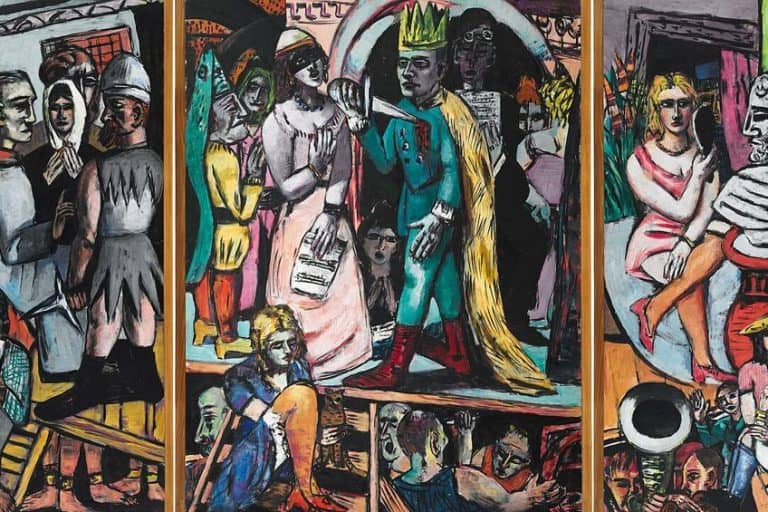Post-Impressionism – History of the Post-Impressionist Movement
France is known to be a cultural and artistic hive. Among many other famous art movements that originated there, post-Impressionism also made its debut there. It emerged as a response to what adherents of this movement saw as the limitations of Impressionism. While this movement in art inherited many of the features that made Impressionism what it is, it also deviated from the latter in important ways. Today, the artworks of post-Impressionists grace museums far across the globe, and some of the most widely recognized paintings in the world form a part of this period in art history.
Table of Contents
What Is Post-Impressionism?
There is perhaps no face that represents the quest of this art movement to add ever-more humanness to art than that of Vincent van Gogh, who summarized some of what was involved in his peculiar creative process: “I dream of painting and then paint my dream”. This article seeks to unpack to what extent the post-Impressionists took the liberty of adding their unique imaginations to their paintings, which was a revolutionary act in the context of conventional art which sought to provide an accurate reflection of the world as it is visually perceived.
In the meantime, if you want the short version of the post-Impressionism definition, it was an art movement that took place in the late 19th century, and which spilled over into the dawn of the 20th century in France.
As the name implies, it took place in the wake of (and indeed as a result of) the Impressionist artists who were a band of painters that emerged in Paris during the 1860s. The term “post-Impressionism” was coined by an art critic called Roger Fry, who used the term in a derogatory manner when he first bore witness to some of the artworks on display at an exhibition.
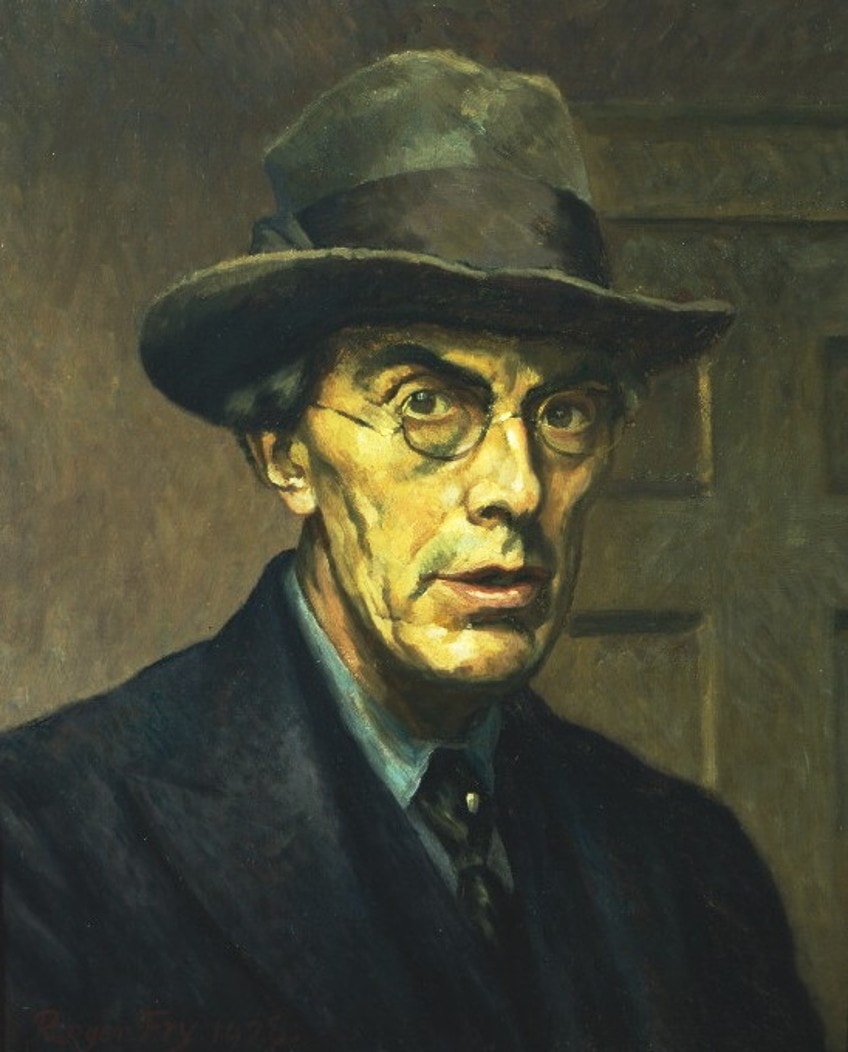
Despite his best intention to communicate his distaste for the new style, the term has forever become associated with the works of artists who we now attribute with great accolades such as Paul Cezanne, Vincent Van Gogh, Georges Seurat, and Paul Gauguin (among many others). One of the defining features of post-Impressionism art was the turning away from the vision of art as a depiction of the world as it is. Instead, artists of post-Impressionism allowed their artwork to reflect the world as it was seen by themselves.
This involved an added emotional or spiritual dimension in which the artwork acted as a portal into a deeper experience of being human. This can be contrasted to art as a realistic or objective portrayal of reality as it is perceived by the senses independently of any kind of subjective filter or lens. By integrating these added dimensions into art, this highly influential movement became a vehicle through which the subjective interpretation of life through the artist’s eyes was allowed expression.
The artists achieved this by breathing vivid color and imagination into the scenes that were depicted and they drew inspiration from a diverse spectrum of artistic styles from around the world.
Impressionism vs. Post-Impressionist Paintings
You might still be wondering what a suitable post-Impressionism definition is. As its name implies, post-Impressionism took place in the wake of Impressionism. Impressionism is the name given to the dreamy, colorful scenes painted by the likes of Claude Monet, Edgar Degas, Berthe Morisot, and Auguste Renoir, who used each brushstroke to capture the changing light in the scenes they witnessed.
This technique was their blessing, as well as their curse according to the artists that came after them, and they were later critiqued by up-and-coming artists based on their preoccupation with the “way” they painted rather than “what” they painted.
The implication of this was that there was a movement toward a greater degree of self-expression in terms of the subject matter that was portrayed in post-Impressionist paintings. Artists belonging to this movement combined sights they remembered from their personal experience, images they had seen in art or imagined from literature as well as elements of their creativity and innovation. This was a distinct deviation from the Impressionist desire to capture scenes as they are rather than as they are perceived or interpreted by the artist on a spiritual or emotional level.
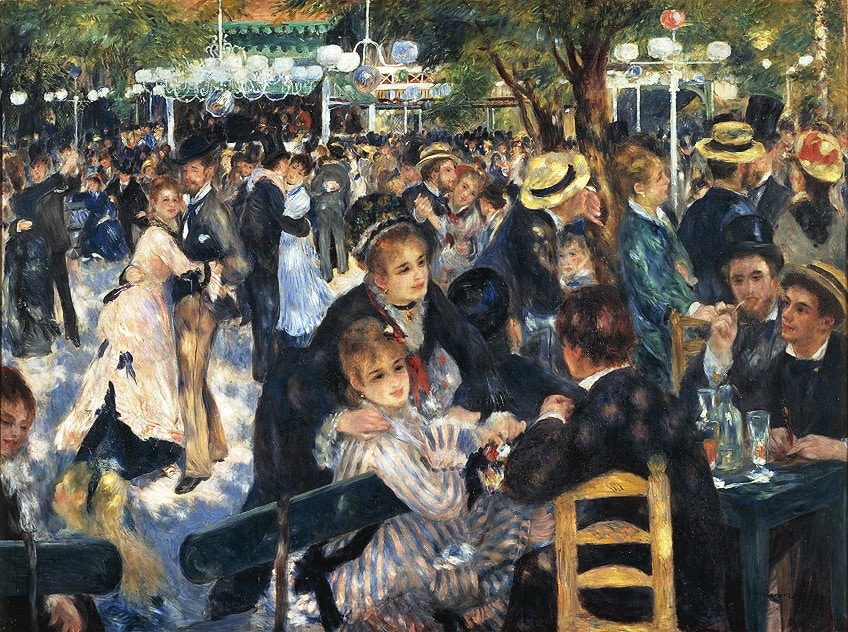
Even though they exhibited together, post-Impressionists tended to work alone which was one of the ways in which these artists deviated from the norms of Impressionists. An implication of this is that the style of post-Impressionism art was not particularly consistent; so much so that it is not easy to identify any particular style as a unifying principle that defined all post-Impressionist artists.
Indeed, even the personal style of an individual artist changes over a lifetime but remains true to the post-Impressionist movement away from the Impressionist over-emphasis on “opticality”.
In the next section, we will explore some of the main sources and inspirations that affected the distinct style of particular artists. We will then discuss the techniques that all artists belonging to this movement adhered to as an outcry against Impressionism.
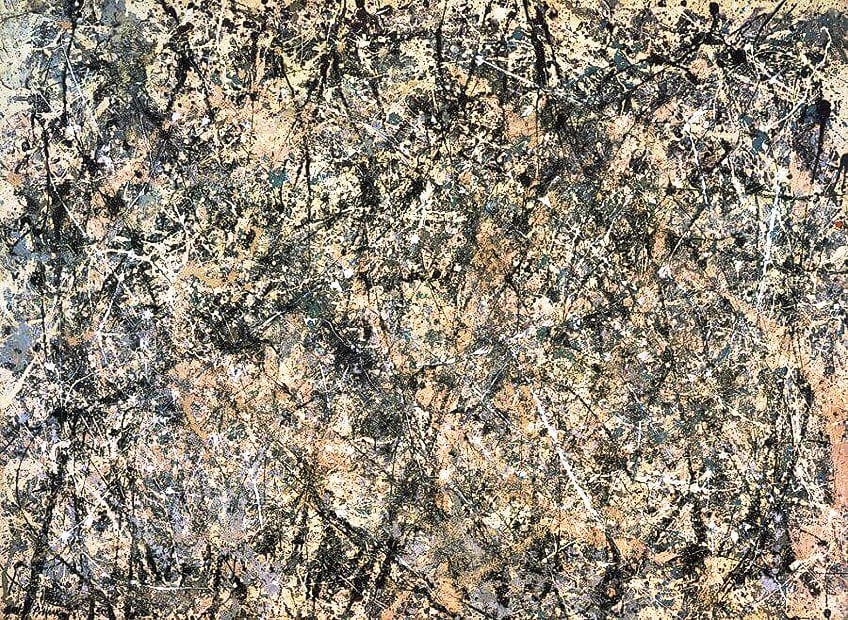
Despite the inconsistency in style among the diverse range of post-Impressionist artists, art belonging to this revolutionary movement can be loosely classified into two groups. Firstly, some are composed of noticeable geometric shapes (which laid the foundation for the emergence of Cubism), and secondly, those that are less geometric, which set the scene for the development of Abstract Expressionism. Abstract Expressionism was an art movement that emerged in the mid-20th century through the art of Jackson Pollock, for example.
Although this movement set into motion a turning away from the naturalistic style of painting that Impressionism was famous for, Impressionism had its merits that continued to be used throughout the post-Impressionist era. Specifically, it paved the way for the continued use of bold color and thick paint.
Post-Impressionism Characteristics and Styles
When we think of the artwork alluded to when we refer to “post-Impressionism”, visions of the swirling, abstract van Gogh paintings often spring to mind. And for good reason: he became one of the most widely known post-Impressionists posthumously, largely due to his unique style that is epitomized in paintings like The Starry Night (1889) which sometimes reflected his inner turmoil. Below, we explore the important post-Impressionism characteristics seen in most of the artworks of the era.
Styles
Post-Impressionism may seem like an isolated movement in itself, but there is more to it than meets the eye. Although the post-Impressionists were united in their enthusiasm for changing the subject matter of their art, the artists within this group had noticeably different styles.
You will also see that the respective styles of different artists drew inspiration from various art movements, some of which originated in countries far beyond the French borders.
Pointillism
Pointillism is the most commonly used name for the application of tiny strokes of color or dots to create the effect of continuous color when viewed from afar. It is also sometimes referred to as Divisionism or Chromo-luminarism, according to Encyclopedia Britannica, although Divisionism relates mainly to small brushstrokes (as opposed to the application of single dots, which is the technique used in Pointillism).
Pointillism was one of the earliest movements away from Impressionism. It was introduced by Georges Seurat, and Paul Signac used similar techniques.

In contrast to the distinct brushstrokes of the Impressionists, Seurat took the more methodical and scientific approach by using single points of color that, when viewed from a distance, created the illusion of continuity.
Examples of artworks that conform to this style include Seurat’s “A Sunday on La Grande Jatte” (1884), “The Lighthouse at Honfleur” (1886), also by Seurat, and “Beach at Heist” (1891) by Georges Lemmen.
Japonisme
Japonisme is the word used to describe artwork that was inspired by and imitated Japanese Ukiyo-e prints; the French word for this style is Japonisme. The main features of this style that were incorporated into European art included changes in the way that the paintings were composed and the kinds of colors that were used.
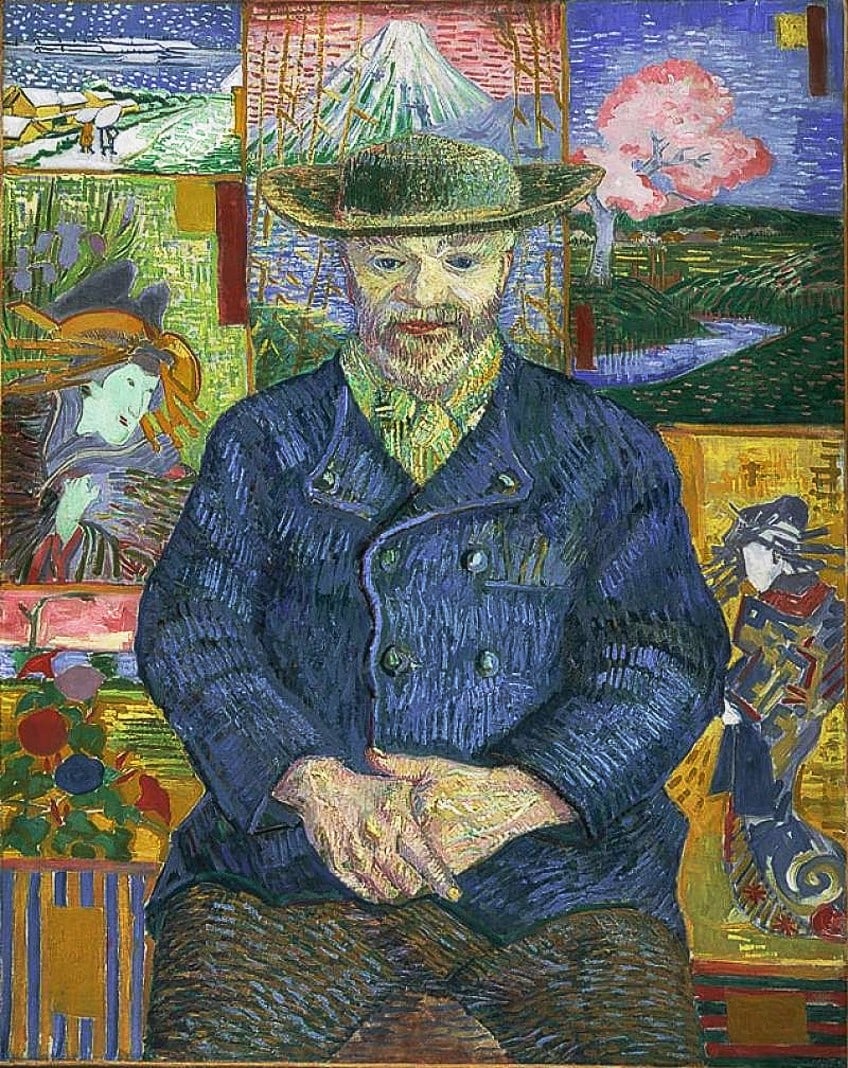
Perspective in paintings was also affected in a way that reflected a bold step away from the need to depict reality or nature objectively: less symmetry and more superimposition of near and far objects. Vincent van Gogh liked to experiment with different styles and was particularly interested, at one point in his career, in Japanese art.
Japonisme was set into motion near the end of the 1800s, largely due to the increased presence of Japanese art and other cultural items in Europe which had a strong influence on Impressionism and post-Impressionism alike.
Synthetism
Above all, Synthetism reflects the movement away from the depiction of real life to a more symbolic approach to representing the world. Instead of striving toward achieving an “objective” or hyper-realistic portrayal of the subject matter, artists who subscribed to Synthetism allowed some room for the inclusion of their emotive interpretation of what they saw.
At the same time, they could modify the image in terms of artistic features like tone, line, and shape that they thought would add value to the painting while still attempting to maintain the integrity of the original scene they were depicting.

The addition of these subjective qualities allowed artists the freedom to paint from their memory or imagination, with no pressing need for the perfectionism required from conventional art. Gauguin’s work during this time took on strong one-dimensional use of color and definite lines to evoke an emotional reaction, whether his source of inspiration was that of myth, religion, or life experience. One of Gauguin’s paintings that came to fruition during this period was Mountains in Tahiti (1897).
Van Gogh and Gauguin were two artists who explored this approach together, during the period in which they lived together in France.
Pictorial Form
Pictorial Form was another distinct style that made an appearance as a revolt against the Impressionistic art that came before post-Impressionism. Unlike the two-dimensionality that was typical of Synthetism, this style took a contradictory turn in its emphasis on form, with the primary subject matter including landscapes, still life paintings, and portraits.
Paul Cézanne was possibly the most well-known artist who used this style.
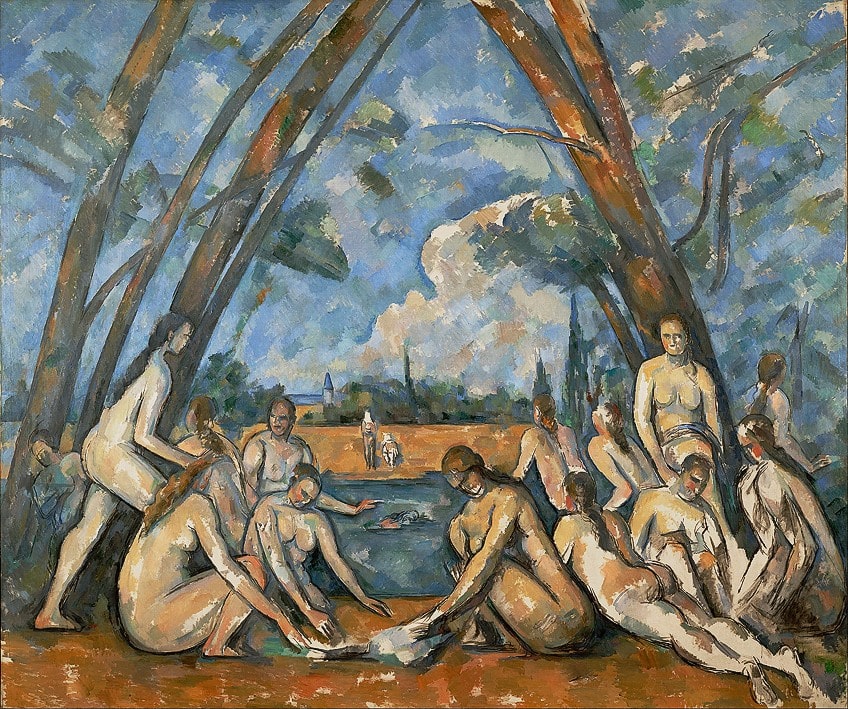
Known widely in the art world for his strong emphasis on the underlying structure of objects and landscapes, Cézanne was regarded in art circles of the time as a master and role model for other artists who followed in his footsteps.
For this reason, he became the face of Cubism, using basic geometric shapes as the foundation upon which the complexities of the picture were built.
Primitivism
In the post-impressionists’ never-ending quest for symbolic meaning, Primitivism featured as one style that struck the fancy of some discerning artists. Its name alludes particularly to the work of Henri Rousseau, but it also alludes loosely to primitive art that inspired the works of Pablo Picasso and other artists.
Like the other styles discussed here, the works of Rousseau were symbolic and much of what he painted was informed by his imagination.

Although Rousseau was not a trained artist, his work had a strong influence on Cubism and Surrealism. Most of Rousseau’s work maintains a consistent style, but some of his better-known work includes The Sleeping Gypsy (1897) and The Dream (1910). Paul Gauguin was another prominent figure in the use of this style.
Les Nabis
The movement was founded by an artist called Paul Sérusier. Central to the tenets of Les Nabis was the idea that artwork should allow for a harmonious balance of the natural world and the self-expression of the artist. It also, like the styles discussed previously, contained a strong element of subjectivism.
The name refers to the spiritual component that, according to adherents to this particular movement, should (and does) play an essential part in a painting.
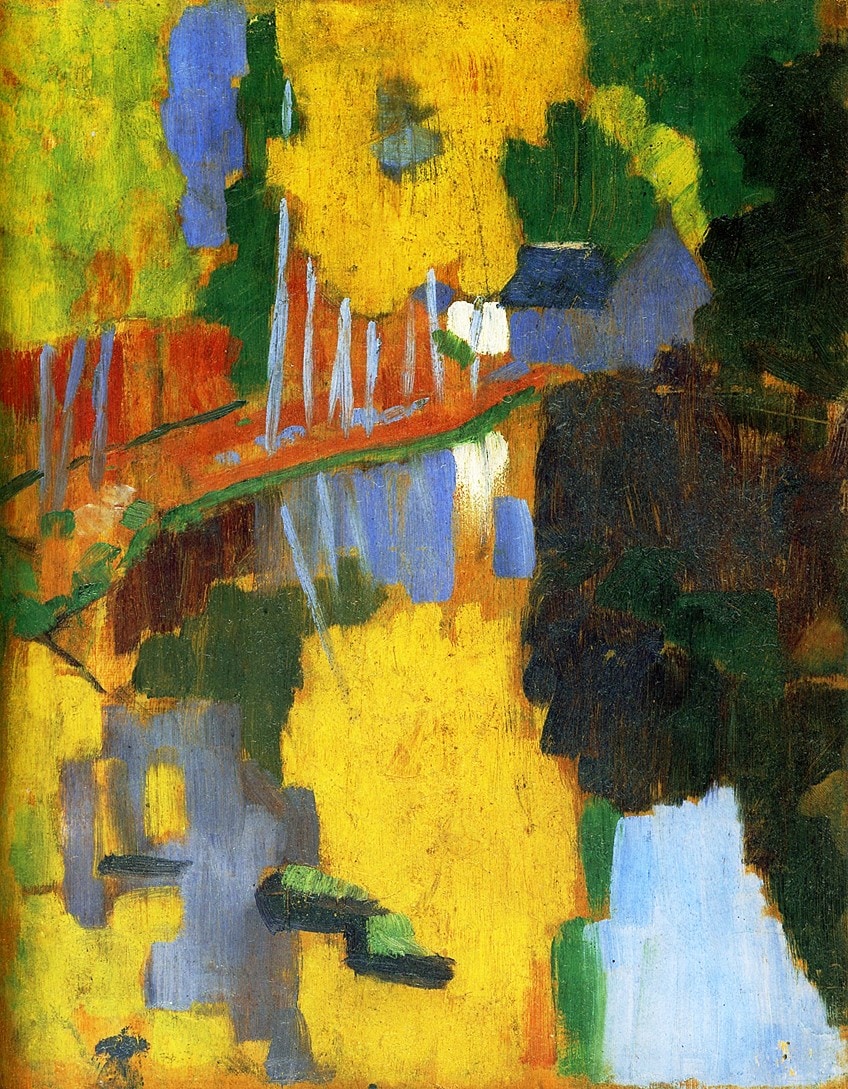
Comparing pieces of art that belonged to this movement to the work of Gauguin, you would be hard-pressed to find significant differences in the way that color was used, in the sense that these artists emanated Gauguin’s method of applying paint directly from the tube. Les Nabis was strongly influenced by Synthetism.
Artists who were members of this group, such as Maurice Denis, Pierre Bonnard, and Paul Sérusier put on exhibitions together in the 1890s. Works that emerged from artists such as these were not limited to paintings – they included stained glass and sculpture as well.
Characteristics
Identifythisart.com gives an account of the main features that changed as Impressionism transformed into Post-Impressionism, one of which was a heavy emphasis on outline and, by implication, form. Aside from this deviation from the vague appearance of artworks created by Impressionist artists, more distinct characteristics that all artworks belonging to this movement had in common are described below.
Symbolism
Often including scenes and objects from the artists’ inner world rather than the external environment, symbolism is an important way for artists to communicate emotion. As seen earlier, one of the defining features of this art movement was a focus on subjectivity and self-expression and what this meant, in terms of the subject matter of the paintings.
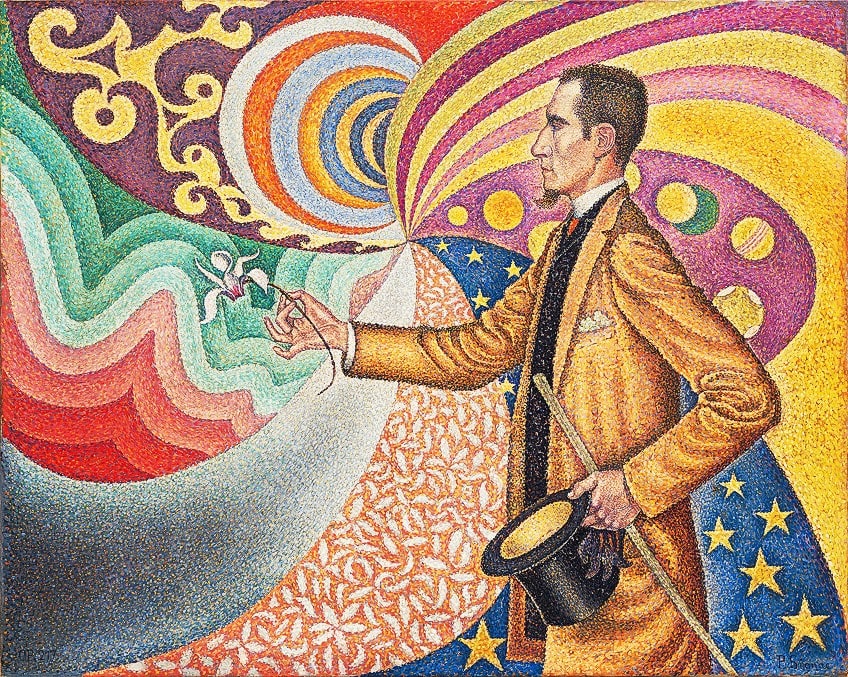
Color
Like the Impressionists, Post-Impressionists were not hesitant about the use of bright colors. However, they could use color more liberally, making unnatural use of color however they liked. Most often, colors were intentionally used to elicit emotion from the viewer, regardless of the viewer’s relationship with the color that was expected or considered to be accurate.
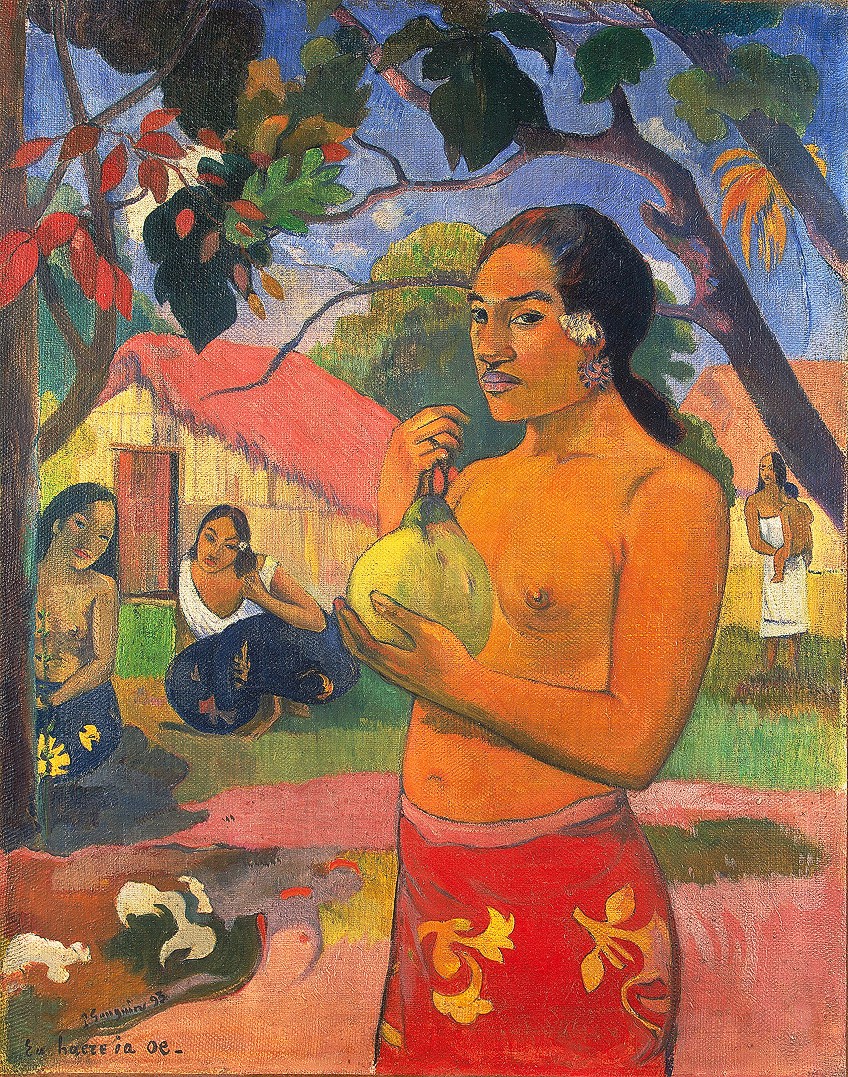
Brushstrokes
Most Post-Impressionism art is identifiable by the distinct use of brush strokes to create greater depth and to give viewers the sense that the artwork was not intended to be an objective reflection of nature, or whatever scene it was depicting.
The most extreme version of this was Pointillism, exemplified in the works of Georges Seurat, who used single points of color rather than full brush strokes to create the intended effect.

Notable Artworks by Post-Impressionist Artists
As we have seen, Post-Impressionism as a broad response to the limitations of the preceding art movement had many adherents. We will describe a few of the most well-known pieces below that emerged on the canvases of prominent artists like Van Gogh and Seurat.
The Starry Night (1889) by Vincent van Gogh
Housed in the Museum of Modern Art in the USA, this 29-by-36-inch painting offers a view of the night sky as seen from Van Gogh’s asylum in Saint-Remy-de-Provence in 1888, although he painted during the daylight hours. Van Gogh painted the sweeping view several times, but The Starry Night is the only painting that captures the view at night.
The painting shows a village illuminated by lights. To the left of the village are tall cypress trees reaching toward the sky and on the right, olive trees. Above the peaceful earthly scene is a swirling night sky lit up by stars.
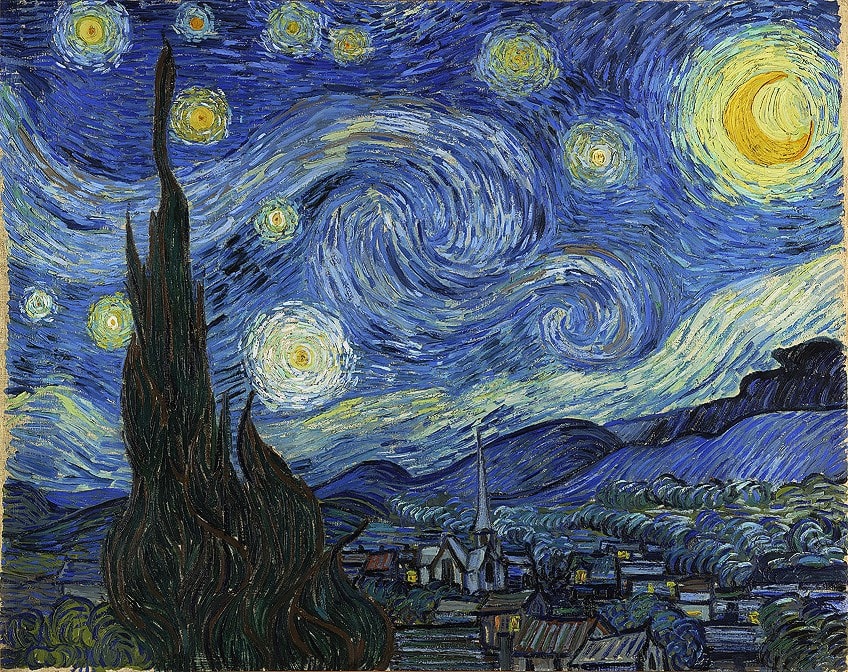
This is undoubtedly one of van Gogh’s most influential paintings. He wanted to be associated with rural and natural scenes and sought to incorporate an element of magic and mystery in his paintings, which is present in this painting.
This is a classic post-Impressionist painting in the sense that it is a clear subjective perspective that shows a strong element of self-expression.
The brush strokes create a dreamy effect that in no way attempts to reflect the scene as it would appear to the unfiltered eye. Other works that belong to Vincent van Gogh are A Wheatfield with Cypresses (1889) and Sunflower (1888).
The Yellow Christ (1889) by Paul Gauguin
This painting attempts to capture the feeling and spiritual experience of several Breton women at a grotto. Gauguin was inspired by a wooden cross he had come across, which is the central feature of this painting, upon which Christ hangs. Encircling the cross are three peasant women who are kneeling.
The painting is dominated by yellows and characterized by thick outlines and simplification of form.
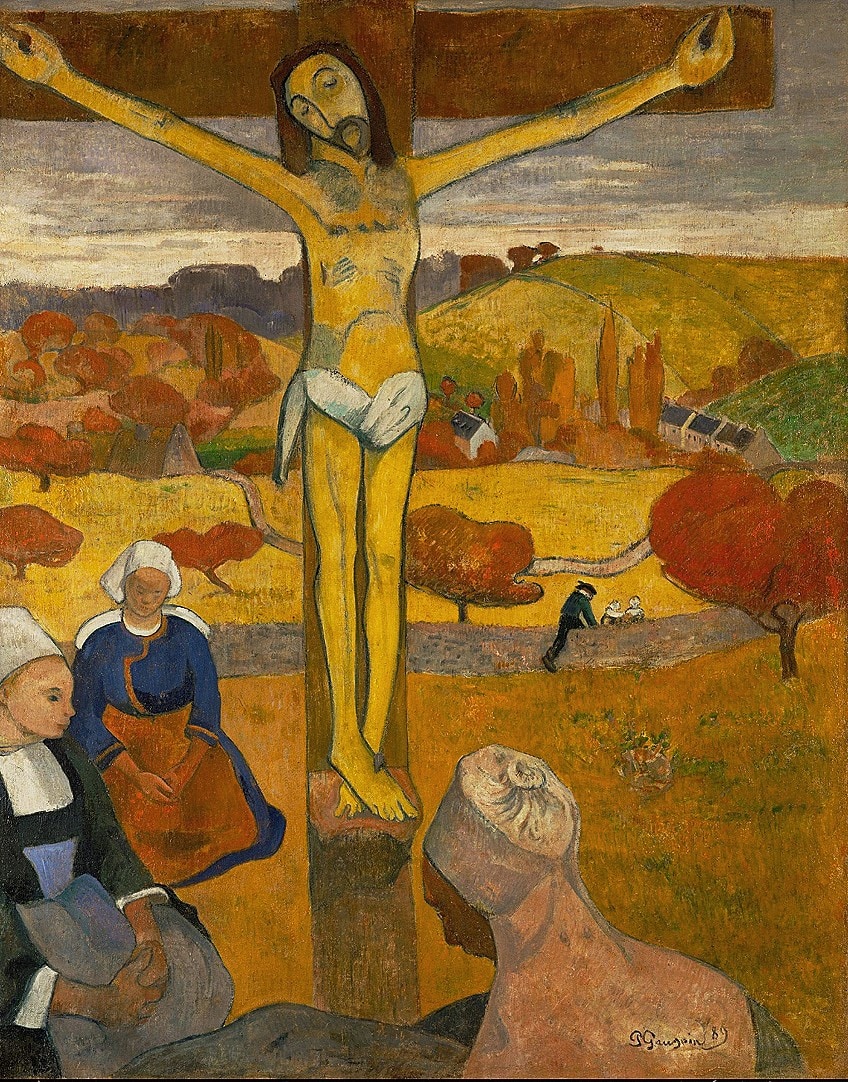
All of these features are intended to harness the energy of the women’s spiritual experience – a classic example of the Post-Impressionists’ desire to convey emotionality and spirituality in their paintings above and beyond the recreation of the visible, physical world.
The Vision After the Sermon (1888) by Paul Gauguin
The Vision After the Sermon is one of Gauguin’s most famous oil paintings. It is housed in Edinburgh, in the National Gallery of Scotland. This painting depicts a group of women leaving a church, after having heard a sermon about Jacob fighting the angel, as it is described in Genesis (and referenced again in Hosea) in the Bible. The peasant women in the painting witness the angelic battle in front of their eyes.
This superimposition of the mythological realm with the depiction of the ordinary scene of a gathering of women is an example of how post-Impressionist artists juxtaposed imaginal elements with everyday scenes – a characteristic trait of the post-Impressionist enterprise.

This piece is also a classic example of the movement away from the Impressionist inclination toward formlessness in their paintings. So in this painting, we can witness a movement toward solid, two-dimensional areas of color and clearly defined forms. These qualities form the backbone of what Gauguin dubbed the Synthesist movement, which is described in detail earlier in this article.
The Card Players (1894 – 1895) by Paul Cézanne
The Card Players consists of a set of five oil paintings of various sizes, that were completed between 1894 and 1895. To prepare for this series of paintings, Cézanne made several drawings before completing the paintings in themselves.
This set of paintings was created in Cézanne’s final few years as a painter.

In each of the paintings, peasant men are depicted deeply immersed in a card game. According to Wikipedia, this somewhat somber mood is a deviation from the Dutch and French tradition of portraying such card games in the context of a more raucous atmosphere.
Other Key Post-Impressionist Artists
As previously indicated, the term that is attributed to artists within this movement does not have a narrow definition and, as such, the number of artists belonging to this group is vast. The following is a summary of the major figure-heads (among others) in this movement:
- Paul Cézanne (1839 – 1906)
- Odilon Redon (1840 – 1916)
- Henri Rousseau (1844 – 1910)
- Paul Gauguin (1848 – 1903)
- Vincent van Gogh (1853 – 1890)
- Henri-Edmond Cross (1856 – 1910)
- Georges Seurat (1859 – 1891)
- Marius Borgeaud (1861 – 1924)
- Paul Signac (1863 – 1935)
- Georges Lemmen (1865 – 1916)
- Pierre Bonnard (1867 – 1947)
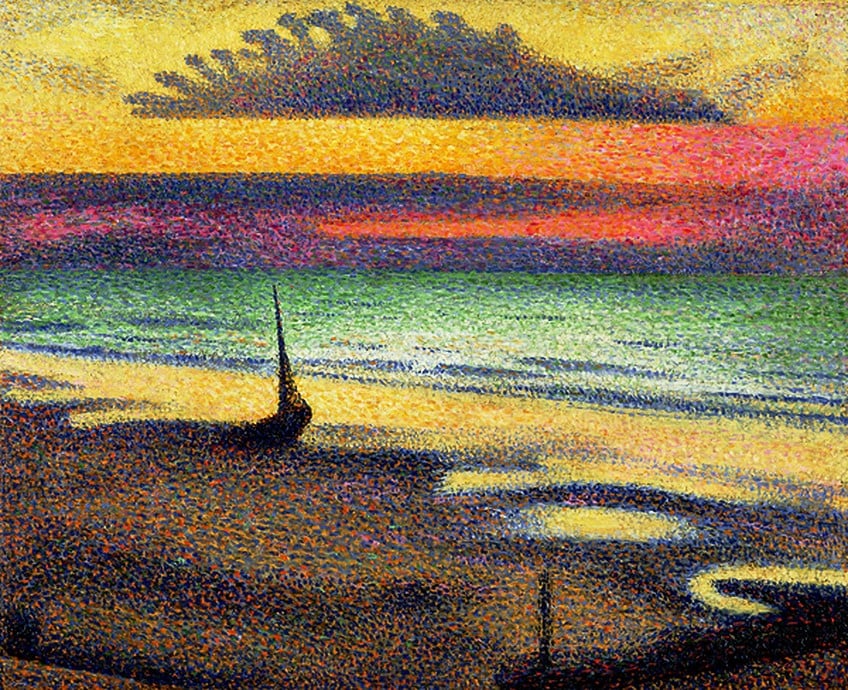
The Importance of Post-Impressionism
This movement made its mark on art in a big way. The coldness of Impressionist art, with its pursuit of the depiction of objective reality, was thawed by the tenacious Post-Impressionist resolution to insert something of their souls into their paintings. In doing this, the boundaries of art were shattered and a more spiritual element was introduced, summoning greater depths and adding a little bit of heart to the obsessive Impressionist outlook.
One of the most influential personalities who made a pivotal contribution to the evolution of painting was Paul Cézanne, having an impact on Cubism, Expressionism, Abstract Expressionism, and Fauvism.
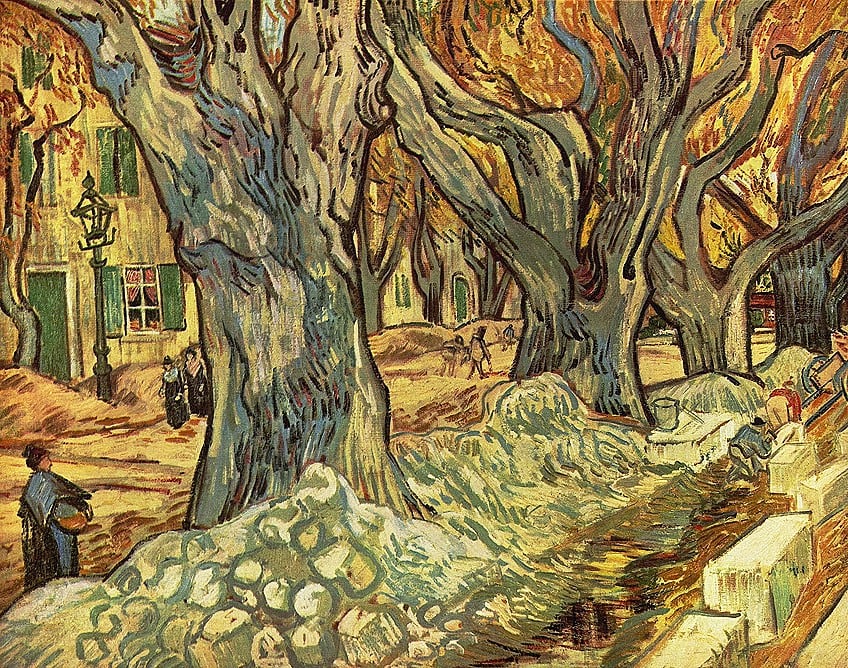
Generally speaking, the art produced by the artists mentioned in this article (as well as the many others who belonged to this diverse range of painters) had a strong influence on Modernism that emerged at the dawn of the 20th century.
Modernism first made an appearance toward the end of the 1800s and took on a new momentum following the First World War.
This was largely informed by an upsurge in philosophy, psychology, and politics, which challenged tired Victorian ideals that had no place in the changing times of the 20th century. Post-Impressionist paintings became the last remaining legacy of the Impressionists before Fauvism entered the art scene. Ultimately, it can surely be said that this form of art had a significant influence on the blossoming of modern and abstract art that later took the art world by storm.
It is not easy to answer the question “what is post-Impressionism” by narrowing it down into a particular style or technique. However, some of the tell-tale signs of this type of art are the use of observable brush strokes and the unapologetic use of color. The emphasis is on symbolism and an element of subjectivity in the paintings rather than realistic detail, as was the case with Impressionism. Despite the fluidity of style in the work of Post-Impressionist artists, this movement played a part in bringing greater depth into art, and also paved the way for later developments in the art world.
Frequently Asked Questions
How Is Post-Impressionism Different from Impressionism?
The major difference between these two art movements relates to the subject matter which, in turn, affects the style and technique used. Impressionist artists seek to paint accurate pictures of natural scenes in terms of the use of color, with special emphasis on depicting light as objectively as possible. In contrast, post-Impressionism (which came after Impressionism), adopted an approach that allowed the subjective interpretation and feeling of the artist to affect the way that a scene was depicted. In this way, post-Impressionists introduced the possibility of their art connecting on a deeper level with the audience.
What Is Post-Impressionism as a Style?
Various styles were part of the post-Impressionism art movement, that had different qualities. The main consistency between the different styles was the inclusion of symbolism, subjectivity, and self-expression in a way that contradicted the Impressionist emphasis on objectively depicting light. Some of the specific styles that emerged within this particular movement included Pointillism, associated with Georges Seurat; Primitivism, as seen in the works of Jean-Jacques Rosseau; and Synthetism, as used by Paul Gaugin.
Why Was Post-Impressionism Important?
Although it can be said that the predecessor of this important artistic movement, Impressionism, evokes an emotional response in the viewer in its luminous depiction of the natural world, post-Impressionism introduced an element of subjectivity and allowed the artist some degree of self-expression in the paintings. This personal touch created greater depth, allowing a deeper connection between the artist and the viewer. It was also important because it influenced later development in art, such as Cubism and Fauvism.
What Are the Characteristics of Impressionism?
One of the features that Impressionism is best known for is its emphasis on capturing, and depicting to the best degree of accuracy it could muster, the light in natural environments, without any interpretation from the painter. In other words, Impressionists tried to be as objective as possible in their attempt to convey light. It is therefore also characterized by vibrant color, and its failure to conform to subject matter that defined art that took center stage in previous years.
Who Are the Most Famous Post-Impressionists?
Post-Impressionism is a very broad term that is used to group artworks that arose as a response to Impressionist art, so there are many famous artists whose styles converged with this movement. Cézanne is often referred to as one of the most well-known Impressionists, as he played a pivotal role in Cubism and had a profound influence on modern art. Although van Gogh struggled to make a name for himself during his lifetime, he became one of the most famous post-Impressionists due to his unique style, vibrant color, and dream-like quality of paintings such as The Starry Night (1889).
Was Pablo Picasso a Post-Impressionist?
Post-Impressionism is a broad term that is used to describe a variety of styles that arose as a challenge to the techniques and styles employed by Impressionism. The hey-day of this art movement was in the late 19th century. While Picasso’s life span was from 1881 to 1973 and his work did fall within the post-Impressionist framework, his work is particularly Cubist in style and he is, therefore, more often labeled as a Cubist than a post-Impressionist.
Isabella studied at the University of Cape Town in South Africa and graduated with a Bachelor of Arts majoring in English Literature & Language and Psychology. Throughout her undergraduate years, she took Art History as an additional subject and absolutely loved it. Building on from her art history knowledge that began in high school, art has always been a particular area of fascination for her. From learning about artworks previously unknown to her, or sharpening her existing understanding of specific works, the ability to continue learning within this interesting sphere excites her greatly.
Her focal points of interest in art history encompass profiling specific artists and art movements, as it is these areas where she is able to really dig deep into the rich narrative of the art world. Additionally, she particularly enjoys exploring the different artistic styles of the 20th century, as well as the important impact that female artists have had on the development of art history.
Learn more about Isabella Meyer and the Art in Context Team.
Cite this Article
Isabella, Meyer, “Post-Impressionism – History of the Post-Impressionist Movement.” Art in Context. May 18, 2022. URL: https://artincontext.org/post-impressionism/
Meyer, I. (2022, 18 May). Post-Impressionism – History of the Post-Impressionist Movement. Art in Context. https://artincontext.org/post-impressionism/
Meyer, Isabella. “Post-Impressionism – History of the Post-Impressionist Movement.” Art in Context, May 18, 2022. https://artincontext.org/post-impressionism/.







